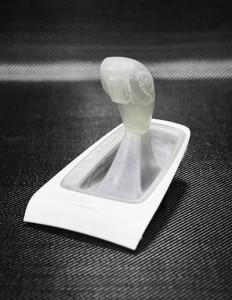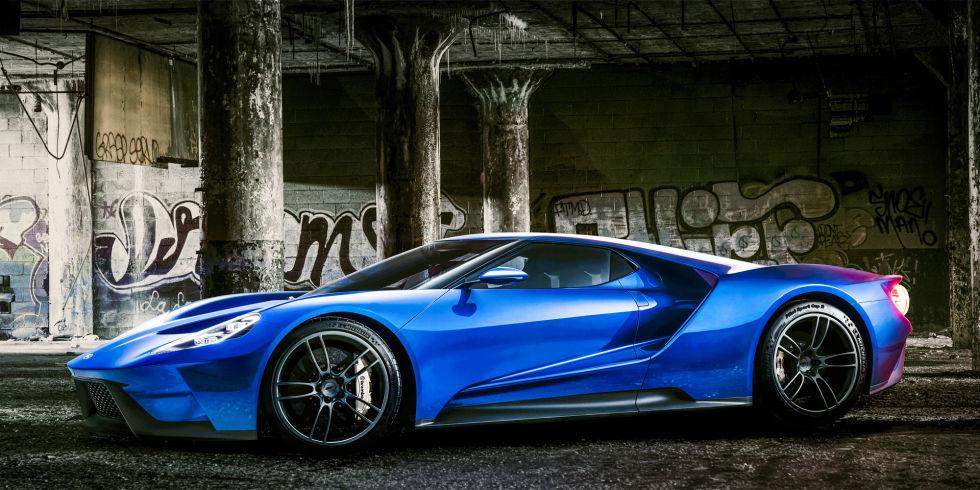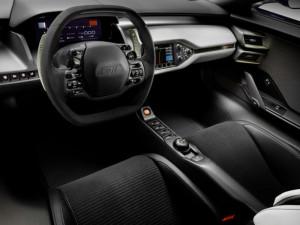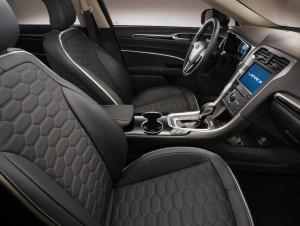 Car manufacturers have long been fans of 3D printing technology, and it is not unreasonable to suggest that the 3D printer sitting on your desk probably wouldn’t be there today without that early support. There is probably no industry on the planet that spends more time and money developing prototypes over and over again until everything is just right than the automotive industry. So it really should come to no surprise that they would covet technology that makes prototyping faster and cheaper. While the process has traditionally been used to prototype models of concept cars or one-off parts, the last few years have seen 3D printing become an integral part of the car production process, especially at Ford.
Car manufacturers have long been fans of 3D printing technology, and it is not unreasonable to suggest that the 3D printer sitting on your desk probably wouldn’t be there today without that early support. There is probably no industry on the planet that spends more time and money developing prototypes over and over again until everything is just right than the automotive industry. So it really should come to no surprise that they would covet technology that makes prototyping faster and cheaper. While the process has traditionally been used to prototype models of concept cars or one-off parts, the last few years have seen 3D printing become an integral part of the car production process, especially at Ford.
Traditional prototyping techniques often require specialized tools used by specialized technicians, taking weeks if not months to produce a prototyped part. But when Ford started using 3D printing regularly, the time waiting for new prototype parts dropped from weeks to days, and sometimes even hours. Not only does that save Ford valuable production time, but 3D printed prototypes cost significantly less, and allow engineers to test and refine parts through multiple generations in the same time that it used to take to produce one. In fact, the all-new Ford GT and the new Ford Mondeo Vignale have both benefitted heavily from the use of 3D printed prototypes.
For the recently revealed 2017 GT, Ford designers used a series of prototypes to refine and perfect the square-shaped F1-style steering wheel that included integrated transmission paddle-shift controls and driver controls. The GT also had the pair of lightweight structural components designed to reduce the weight of the cars upward-swinging doors and the door controls prototyped multiple times. The race car version of the Ford GT, scheduled to compete next year in the FIA World Endurance Championship, has an intake manifold on the EcoBoost race engine that was heavily prototyped multiple times to optimize the design.
For Ford’s new line of premium vehicles the Ford Mondeo Vignale, 3D printing helped engineers and designers perfect the unique, hexagonal Vignale design in the upper front grill. But they didn’t stop there, multiple 3D printed prototypes also helped them design the 19-inch nickel alloy wheels as well as the dual chrome exhausts with their striking polished aluminium surrounds. The Ford design team also 3D printed variations of the Vignale badges, not to mention all of the car’s exterior ornamentation and aesthetic details.
“3D computer printing technology has totally changed the way we design and develop new vehicles. We can be more creative in trying to find potential solutions, and for the customer this means that our cars are better able to incorporate the latest thinking in design and technology. Incredible as it is that 3D printing has been around for more than 25 years, it is a technology that is moving more quickly than ever before, opening up new ways of manufacturing the cars of the future,” explained Ford of Europe’s Rapid Technology supervisor, Sandro Piroddi.
The fact that both the Ford Dunton Technical Centre, in Essex and their European headquarters in Germany have Rapid Prototype teams is clear evidence that they have fully integrated 3D printed prototypes into their typical workflow for designing a new car. The process starts with a series of sketches and 2D drawings from the design team that are then developed into hand-sculpted clay scale models. At this point a full-scale clay model is sculpted, while digital sculptors use 3D software to create a CAD model of the design concurrently.
By creating both the full-sized clay model and the CAD model at the same time, Ford is able to save valuable time in evaluating the first design. The full-sized clay model is ideal for giving the team an idea of the real-world proportions, lines and the general shape of the car, while the CAD model allows them to focus on the smaller and more complex details of the car, which often end up 3D printed and integrated with the clay model.
 The Rapid Prototype teams have a wide array of 3D printing technology at their fingertips that are employed based on how detailed any prototyped parts need to be. Prototypes can be produced in standard FDM plastics, laser sintered in more durable and finishable materials, or even fully-solid metal parts can be fabricated with metal 3D printers to ascertain the parts weight, quality and durability. And because so much of a typical Ford car is made using 3D technology, the company has a massive inventory of digital assets for just about every Ford ever manufactured.
The Rapid Prototype teams have a wide array of 3D printing technology at their fingertips that are employed based on how detailed any prototyped parts need to be. Prototypes can be produced in standard FDM plastics, laser sintered in more durable and finishable materials, or even fully-solid metal parts can be fabricated with metal 3D printers to ascertain the parts weight, quality and durability. And because so much of a typical Ford car is made using 3D technology, the company has a massive inventory of digital assets for just about every Ford ever manufactured.
These digital files used to be archived away primarily for the design team to reference, but for the first time ever Ford is making many of these digital assets available for the general public. The Ford 3D Store, the first automaker‑authorised store for 3D-printable files, allows customers to purchase or download detailed 3D models of several of their top selling cars, including the All-new Ford GT, F-150 Raptor and the 2016 Shelby GT 350R. They also teamed up with Turbosquid to sell over a thousand highly detailed 3D models of cars from their hundred-plus year history.
Let’s hear your thoughts on this new vehicle design in the 3D Printed Ford GT forum thread on 3DPB.com.
Subscribe to Our Email Newsletter
Stay up-to-date on all the latest news from the 3D printing industry and receive information and offers from third party vendors.
You May Also Like
Profiling a Construction 3D Printing Pioneer: US Army Corps of Engineers’ Megan Kreiger
The world of construction 3D printing is still so new that the true experts can probably be counted on two hands. Among them is Megan Kreiger, Portfolio Manager of Additive...
US Army Corps of Engineers Taps Lincoln Electric & Eaton for Largest 3D Printed US Civil Works Part
The Soo Locks sit on the US-Canadian border, enabling maritime travel between Lake Superior and Lake Huron, from which ships can reach the rest of the Great Lakes. Crafts carrying...
Construction 3D Printing CEO Reflects on Being Female in Construction
Natalie Wadley, CEO of ChangeMaker3D, could hear the words of her daughter sitting next to her resounding in her head. “Mum, MUM, you’ve won!” Wadley had just won the prestigious...
1Print to Commercialize 3D Printed Coastal Resilience Solutions
1Print, a company that specializes in deploying additive construction (AC) for infrastructure projects, has entered an agreement with the University of Miami (UM) to accelerate commercialization of the SEAHIVE shoreline...


































